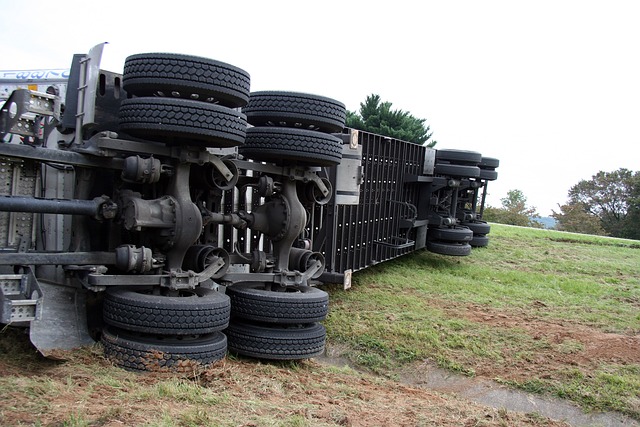To troubleshoot a truck battery that fails to start the engine, begin with a voltage check using a multimeter. A healthy lead-acid truck battery should read at least 12.6 volts, while AGM or gel batteries should register around 12.4 volts. For a more detailed assessment, conduct a load test by setting the multimeter to the "load" setting and creating a load equivalent to half the CCA rating of your battery after a 15-minute engine warm-up. Monitor the voltage drop under load and recovery time for insights into the battery's health. Regularly inspect and clean corrosion from battery terminals to maintain conductivity, and apply dielectric grease or anti-corrosion spray for protection. If issues persist despite a clean terminal, consider factors like the battery's age, charge retention, and potential parasitic drains from faulty switches or devices drawing power without your knowledge. Address these by systematically checking accessories, fuses, and relays. In cold climates or for off-road use, select a durable battery, use insulation to protect against temperature extremes, and consider a smart charging system. Regularly inspect the alternator and charging system for proper function to ensure the battery remains charged. For added safety in remote locations, carry a secondary battery or a portable jump starter to avoid starting issues. Following these steps will help keep your truck's battery functioning correctly, especially under challenging conditions.
When facing a truck battery that won’t start, frustration often follows. This article demystifies the common issues causing such problems and provides practical solutions for truck owners. From recognizing symptoms and causes to mastering a basic battery load test at home, this guide ensures you have the knowledge to troubleshoot effectively. Additionally, learn how to maintain your truck’s battery terminals, check your electrical system for faults, and identify parasitic drains that can sap your power. With these steps, you’ll keep your truck’s battery in top condition, even in challenging environments.
- Understanding Truck Battery Start Issues: Symptoms and Causes
- How to Perform a Basic Battery Load Test at Home
- Cleaning and Maintaining Your Truck's Battery Terminals for Reliable Performance
- Checking and Replacing Worn-Out or Faulty Components in Your Truck's Electrical System
- Diagnosing Parasitic Drains: Identifying and Eliminating Unauthorized Power Draws
- Tips for Extending Battery Life in Harsh Climates and Rough Terrain Conditions
Understanding Truck Battery Start Issues: Symptoms and Causes

How to Perform a Basic Battery Load Test at Home

If your truck battery fails to start your vehicle, performing a basic load test at home can help diagnose the issue. To begin, ensure you have all necessary safety equipment, such as protective gloves and eyewear, and work in a well-ventilated area. Locate your truck’s battery and remove the negative (-) cable first to prevent any electrical shorts. With the negative terminal disconnected, you can proceed to measure the battery’s voltage. Use a reliable multimeter to check the battery’s state of charge. A fully charged lead-acid truck battery should read at least 12.6 volts; for AGM or gel batteries, the minimum should be around 12.4 volts. If the voltage is below this range, the battery may be discharged and requires charging.
After assessing the initial voltage, you’ll want to perform a load test. Connect the multimeter in series with the battery, placing it between the negative terminal and a good ground point. Set the multimeter to the “load” setting or equivalent. For a lead-acid battery, start the engine and allow it to run for about 15 minutes to reach operating temperature. Then, gradually draw power from the battery by creating a load with a known current rating, such as 1/2 the CCA (Cold Cranking Amps) rating of your truck’s battery. For example, if your battery has a CCA rating of 400, use a load of about 200 amperes. Observe the voltage drop and the time it takes for the battery to recover after the load is removed. A healthy battery should show minimal voltage drop and a quick recovery. If the voltage drops significantly or takes too long to recover, your battery may be weak, sulfated, or otherwise compromised. In such cases, replacing the battery or reconditioning it with proper charging might be necessary. Always remember to reconnect the negative cable before ending your test to prevent any electrical shocks or damage to your truck’s electrical system.
Cleaning and Maintaining Your Truck's Battery Terminals for Reliable Performance

Regular upkeep of your truck’s battery terminals is a critical aspect of ensuring reliable starts and overall vehicle performance. Over time, corrosion can accumulate on the battery terminals due to the chemical reactions between the battery electrolyte and the metal parts, which include the posts and cables. This buildup, often identified by a white or green powdery substance, can impede conductivity, causing a weak connection that may prevent your truck from starting. To maintain optimal battery performance, it’s essential to periodically inspect and clean the terminals.
Begin by removing the cable connections carefully, noting their correct positions for reattachment. Use a wire brush to gently scrub away any corrosion from both the battery posts and the terminals of the cables. Ensure you wear protective gloves and eyewear during this process to avoid contact with acids or electrical shocks. After cleaning, apply a coat of dielectric grease or anti-corrosion spray to the terminals and battery posts to protect them from future corrosion. This simple maintenance task can extend the life of your truck battery and prevent unwanted surprises when you need your vehicle most. Additionally, keep an eye on the water levels in your battery if it’s a traditional lead-acid model, and top off the electrolyte as needed, ensuring that the plates are adequately submerged to maintain proper charge and operation. Regular cleaning and maintenance of your truck’s battery terminals will contribute significantly to the reliability and longevity of your vehicle’s power source.
Checking and Replacing Worn-Out or Faulty Components in Your Truck's Electrical System

When confronted with a situation where your truck battery fails to start, the first step is to systematically check and diagnose the health of your truck’s electrical components. It’s crucial to inspect the battery itself for signs of corrosion on the terminals, as this can significantly impede its ability to hold and deliver power. If you notice a white or greenish-blue buildup around the connections, cleaning the terminals with a wire brush may restore proper function. However, if the battery is several years old or shows no signs of holding a charge, it’s likely time for a replacement. A weak battery can drain over time and may not start your truck even if it appears to be fully charged. Replacing the battery with a new one that meets the manufacturer’s specifications for your vehicle can resolve this issue.
After addressing the battery, it’s equally important to check other components within the electrical system. This includes the alternator, starter, and any related wiring. An alternator in poor condition might fail to recharge the battery after the engine is started, leading to a repeat of the starting problem. A faulty starter or damaged wires can also prevent your truck from cranking. Utilizing a multimeter can help diagnose issues within the electrical system by verifying voltage levels and ensuring components are functioning as intended. If any component is found to be underperforming or defective, it should be repaired or replaced promptly to restore the reliability of your truck’s starting mechanism. Regular maintenance checks on these components can prevent such issues from arising unexpectedly.
Diagnosing Parasitic Drains: Identifying and Eliminating Unauthorized Power Draws

If your truck battery consistently fails to start, it could be due to a parasitic drain, where unauthorized power draws deplete your battery overnight or even while the vehicle is parked. To diagnose and resolve this issue, you must first understand what constitutes a parasitic drain. These are often electrical circuits that draw power from your truck’s battery without your knowledge. This can happen due to various reasons such as faulty switches, interior lights left on, or electronic devices connected and in standby mode.
Begin by inspecting all electronic accessories and devices that may have been left on or connected to the truck’s power supply. Ensure that all door locks, alarm systems, and any auxiliary equipment are turned off. Next, check for any fuses or relays that control accessory power sources. A multimeter can be invaluable in this process, as it allows you to measure the current draw on your battery even when everything appears to be switched off. If you detect a continuous draw greater than what should be normal, trace the circuit back to its source. Once located, repair or disconnect the component responsible for the drain. It’s also advisable to install a resettable polyfuse or a battery minder in your truck to protect against future parasitic drains and ensure your truck battery maintains sufficient charge. Regular maintenance and vigilance can prevent these issues from occurring, safeguarding your truck’s battery life and ensuring it starts reliably every time you turn the key.
Tips for Extending Battery Life in Harsh Climates and Rough Terrain Conditions

When operating in harsh climates or navigating rough terrain, maintaining your truck’s battery health becomes paramount to ensure consistent starting performance. To extend the life of your truck battery under these challenging conditions, consider implementing a few key strategies. Firstly, regularly inspect and clean the battery terminals, ensuring they are free from corrosion and provide a secure connection. This simple maintenance task can significantly improve conductivity and prevent premature battery failure. Additionally, opt for a high-quality battery with a reputation for durability in extreme conditions. A robust battery designed for such environments will better handle the demands placed upon it by cold starts or the strain of off-road travel.
Furthermore, employ a battery insulator to protect your truck’s battery from extreme temperatures. Cold can drain a battery’s charge quicker than expected, while excessive heat can lead to internal battery gassing and reduced lifespan. Use a smart charging system that can automatically adjust charging amperage to the state of charge or condition of the battery. This not only helps in optimizing the battery’s health but also prevents overcharging, which can be detrimental to the battery’s longevity. Regularly monitor your truck’s alternator and charging system to ensure they are functioning correctly; a faulty system can lead to an improperly charged battery, leading to starting issues down the line. Lastly, consider investing in a secondary battery or a portable jump starter for backup, especially when venturing into areas where assistance might be scarce. By adhering to these tips and maintaining your truck’s battery system diligently, you can significantly enhance its ability to withstand the rigors of harsh climates and rough terrain, ensuring your truck starts reliably whenever you need it.
When confronted with a non-starting truck battery, the root cause is often more straightforward than one might anticipate. Regular maintenance, such as conducting a basic load test, cleaning terminals, and inspecting the electrical system can prevent many issues. Identifying parasitic drains and replacing worn components are key steps to restore your truck’s starting power. By adhering to the tips provided for managing battery life in extreme conditions and tough terrains, you can ensure that your truck’s battery remains reliable and ready for use. Remember, proactive maintenance is the best strategy for avoiding start-related problems with your truck battery.



